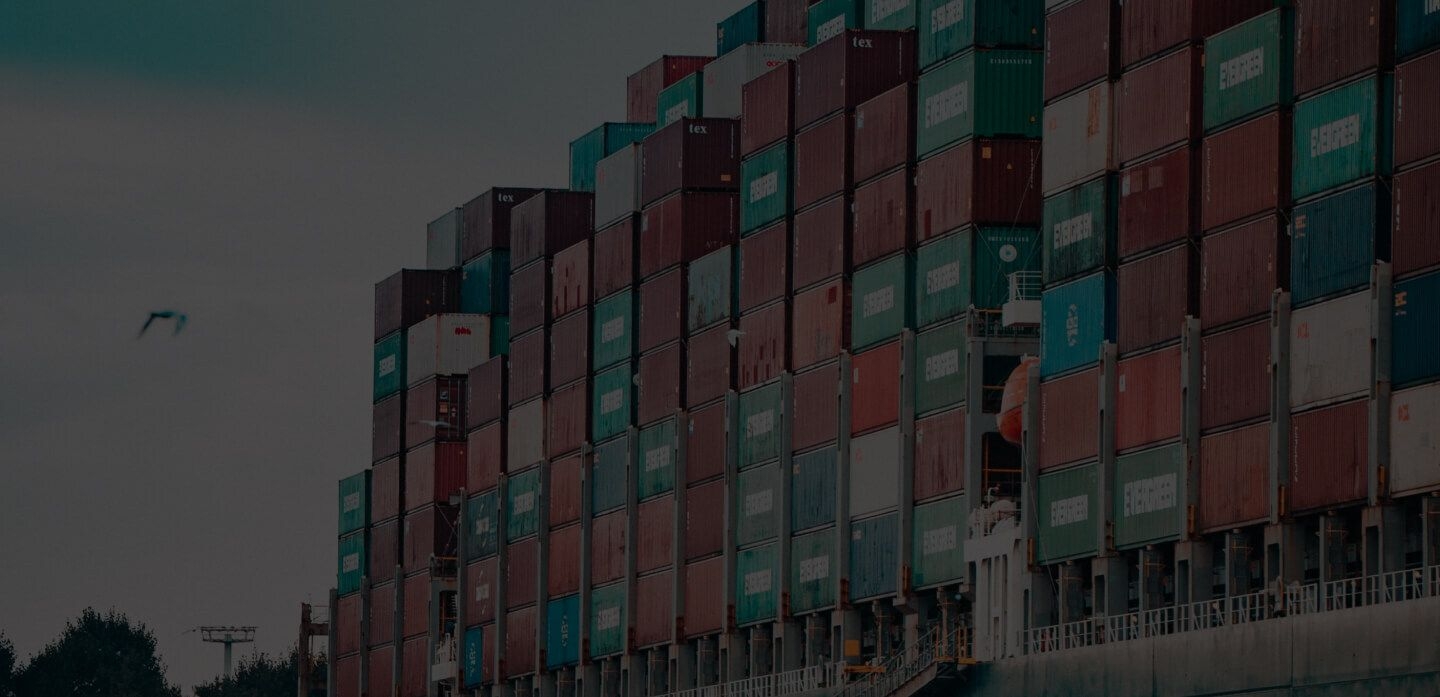
Ocean & Air Freight Shipping From China to India
Information and quote from China to India for LCL, FCL and Air shipping
- Compare Thousands of Quotes from Multiple Carriers
- Trusted by 10,000+ Customers
- 40,000+ Tradelanes Covered Globally



The bilateral trade relationship between China and India is very prosperous. China is India’s largest goods trading partner. Over the last decade, China-India trade grew by 90.14%, with an average yearly growth of 12.87%. Bilateral trade between the two countries has crossed the USD 100 billion mark for two consecutive years.
If you’re a business based in China looking to tap into the Indian market and enjoy the prosperous trade relations between the two countries, you’ve come to the right place. Here’s everything you need to know about ocean and air freight shipping from China to India.
What Are the Options for Shipping Freight From China to India?
To ship freight from China to India, you can go for either ocean freight or air freight.
Ocean Freight From China to India
Ocean freight is the most economical way to ship goods from China to India. This shipping mode offers two options: less-than-container load (LCL) or full container load (FCL).
LCL is best for shipping small cargo. Here, goods are consolidated with cargo belonging to other shippers to maximize container space. This benefits shippers by reducing their shipments' costs.
On the other hand, FCL is for shippers shipping large volumes of goods. They rent the space in an entire container, giving them more control over their shipments.
Air Freight from China to India
The fastest way to ship goods from China to India is via air freight. It’s also the most secure, thanks to stricter airport regulations. However, you must know that air freight is also the most expensive mode of transport.
How Much Does it Cost to Ship Cargo From China to India?
The cost of shipping cargo from China to India depends on various factors, including:
Your choice of ocean or air shipping
Your preference for door-to-door, port-to-port, port-to-door, or door-to-port shipment
Your consignment’s weight, volume, and size
Weight and size limits
To determine your shipping costs, use our online freight costs calculator. Additionally, you can find the current cost of shipping a standard 20-foot container from China to India in the table below:
TRADE LANE RATES
Freight Shipping Cost From China to India for a 20-foot Container
How long does it take to ship cargo from China to India?
Shipping goods from China to India varies in transit time, primarily based on the international shipping mode you choose. Additional factors impacting this include:
The shipping season (peak or low)
The directness of the shipment's route
The popularity of the trade lane
Geopolitical issues
Potential incidents at ports
How long does it take to ship cargo by sea from China to India?
Ocean freight from China to India will take between 15 to 50 days.
How long does it take to ship cargo by air from China to India?
Air freight from China to India takes only 2 to 8 days.
For the most accurate estimate, we recommend using our transit time calculator.
Customs Clearance in China and India
When your goods arrive in India, they will need to go through the customs clearance process. This involves completing and submitting the following paperwork:
A commercial invoice
A packing list
A certificate of origin
A letter of credit or other payment terms (depending on the contract between the parties involved)
A bill of lading for ocean freight or an Airway Bill for air freight
For examples of these documents, check out our full documents list.
Should You Choose Ocean Freight or Air Freight?
The choice between ocean and air freight will depend on the unique requirements of your cargo. Here are some pointers to help you make the right decision.
Ocean Freight
If you prioritize cost savings, ocean freight is the mode of shipment for you. It costs significantly less than air freight, but keep in mind that ocean freight has long transit times.
If you opt for ocean freight, you can choose between LCL and FCL freight shipping.
Considerations for LCL Freight Shipping
LCL freight shipping is the suitable mode of shipment for you if your cargo is:
Small in size and quantity
Lightweight
Suitable for consolidation with cargo belonging to other shippers
Not delicate, fragile, or high-value
Not requiring special handling or movement
Considerations for FCL Freight Shipping
FCL freight shipping, on the other hand, is better for you if your cargo is:
Large in size and quantity
Heavy or overweight
Not suitable for consolidation with cargo belonging to other shippers
Delicate, fragile, or high-value
Requiring special handling or movement
Air Freight
If time is your priority, air freight is the suitable mode of shipment for you. This mode of shipment is also the most secure, perfect if you’re shipping perishable and high-value cargo. However, you should know that air freight can get expensive, so make sure to budget accordingly.
Ocean Cargo Port Guide
Cargo ports of origin in China
Port of Shanghai
The Port of Shanghai is strategically located in a key geographic area, connecting it to critical road and railway networks. It has access to China’s southern and northern coasts and the world’s oceans. The port handles 43.5 million TEUs per year.
Port of Shenzhen
The Port of Shenzhen is located in Guangdong Province and is China’s most important harbor for foreign trade. It headquarters over 40 shipping companies and connects over 300 ports across 100 nations. The port handles a total container traffic of 27.7 million TEUs per year.
Port of Ningbo-Zhoushan
The Port of Ningbo-Zhoushan is one of China’s most rapidly growing ports, consistently seeing a sharp increase in cargo volume since 2005. It handles over 27.535 million TEUs annually and has a total cargo throughput of 1.12 billion tons.
Cargo ports of arrival in India
Kandla Port
The Kandla Port is India's first export processing port and is the country’s biggest container port by cargo throughput. It has high profitability for exporting grain and importing oil. Most shipments it handles include heavy machinery, textiles, chemicals, petroleum, and salt.
Mumbai Port
The Mumbai Port is the largest in India by size and shipping traffic. It is located in a natural harbor in West Mumbai. The port is crucial to the Indian economy, handling 20% of India’s foreign trade.
Chennai Port
The Chennai Port is the second biggest port in India, handling over 100 million metric tons of cargo per year. It is the third port established in India, located on the Coromandel Coast in the Bay of Bengal.
Air Freight from China to India: An airport guide
Airports of origin in China
Shanghai Pudong Airport
The Shanghai Pudong Airport is one of the two international airports serving the city of Shanghai. It is a hub for various airlines, including China Eastern Airlines and Air China, which help it handle almost 4 million metric tons of cargo annually.
Guangzhou Baiyun International Airport
The Guangzhou Baiyun International Airport serves the Guangzhou area in Guangdong province. It houses China Southern Airlines, China Eastern Airlines, and more airlines that help it handle about 2 million metric tons of cargo per year.
Shenzhen Baoan International Airport
The Shenzhen Bao'an International Airport is located near the Shenzhen city center. Housing China Southern Airlines, Shenzhen Airlines, and more, it handles roughly 1.5 million metric tons of cargo annually.
Airports of arrival in India
Indira Gandhi International Airport
The Indira Gandhi International Airport serves the capital city of Delhi. It houses a range of cargo airlines, including IndiGo, Air India, Vistara, SpiceJet, Go First, and Jet Airways. The airport handles more than 603 thousand metric tons of international freight annually.
Mumbai International Airport
The Mumbai International Airport, also called the Chhatrapati Shivaji Maharaj International Airport, serves the city of Mumbai. It’s India’s second busiest airport by passenger traffic. In terms of cargo, the airport handles over 557 thousand metric tons of cargo per year.
Bangalore Airport
The Bangalore Airport, also called the Kempegowda International Airport Bengaluru, is located in the capital city of Karnataka, India. It is operated by Bengaluru International Airport Limited and has an annual import throughput of more than 72,000 metric tons of cargo.
About Us
Why Ship From China to India With iContainers?
Why Us?
Shipping cargo requires considering various factors, such as the season, the size of the cargo, the shipping method, and the origin and destination.
With years of industry expertise, iContainers combines traditional freight forwarding services with advanced technology for your convenience. Our digital platform allows you to oversee your entire shipment—from requesting a quote to booking and tracking your cargo—all from your mobile device.
Feel free to contact us for a free quote at any time. We are always available to provide the information you need